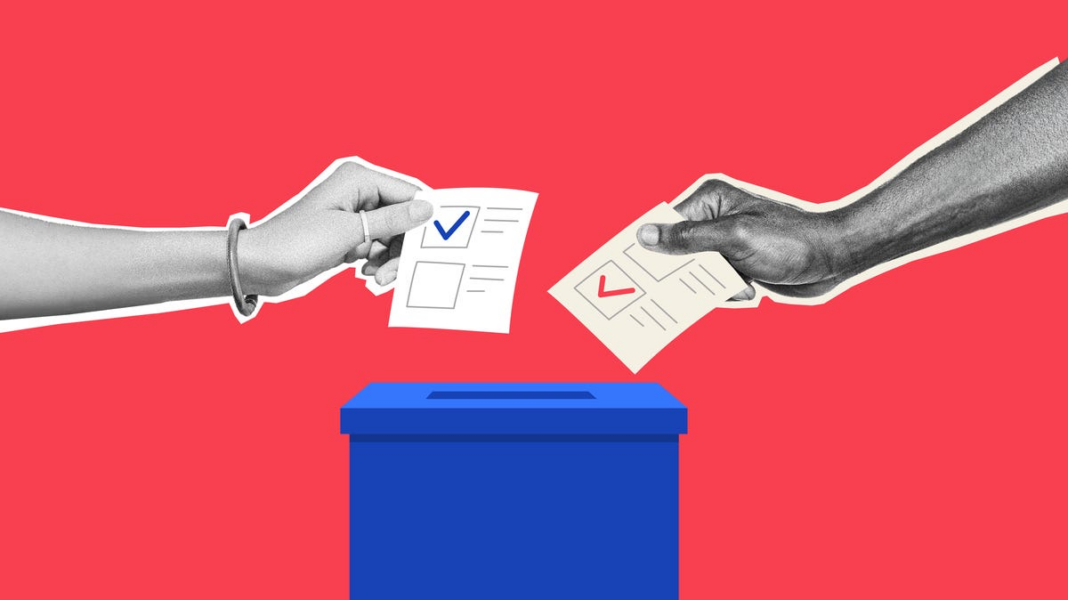Youth voter registration is trailing behind 2020 figures
This year, over 8 million young Americans will have the chance to vote for the first time, contributing to approximately 41 million total Gen Z voters in 2024. The pressing question is how many of these eligible young voters are registered and if this will translate into a higher turnout.
A report from The Center for Information and Research on Civic Learning and Engagement (CIRCLE) reveals a rise in youth voter registration rates since July, although most states still fall short of their November 2020 registration figures.
The CIRCLE analysis compares youth voter registration numbers from September 2024 and November 2020 across 34 states. Researchers expect a gradual increase in registration as many individuals continue to sign up in the upcoming weeks.
The report’s authors highlighted, “The fact that most states have fewer registered young voters than during the 2020 election emphasizes that efforts to register youth must continue urgently.”
Here’s what you should know about the shifts in youth voter registration:
Which states are seeing growth in eligible voter registration?
According to CIRCLE’s analysis, eight states—Michigan, Oklahoma, West Virginia, Kansas, Nevada, Texas, Massachusetts, and Tennessee—have shown slight improvements in the number of registered voters aged 18 to 29 compared to November 2020.
Michigan and Nevada have recently adopted automatic voter registration systems, which can aid in boosting registration rates among young individuals, the report notes.
This approach automatically registers qualified citizens interacting with their local driver’s license offices unless they opt-out, as described by the MIT Election Data and Science Lab. Advocates of automatic voter registration argue that it enhances access to voting and modernizes the registration process.
Alberto Medina, communications team leader at CIRCLE, shared with YSL News that he is not surprised by the disparities in registration statistics among states. “The truth is that some states simplify the registration process significantly compared to others, thanks to policies such as automatic voter registration and pre-registration.”
Medina further noted that Michigan and Nevada, which have implemented these favorable policies, have already surpassed their 2020 young voter registration numbers.
Many states lag in registering new eligible voters
Among the 34 states in CIRCLE’s report, 31 are behind their November 2020 registration numbers for 18- and 19-year-olds. Most of these states show a drop of over 20% when compared to their 2020 young voter registrations.
Pennsylvania and Arizona—both pivotal swing states—are particularly lagging in their registration of 18- and 19-year-olds. Pennsylvania’s registration is down by 40% in comparison to its 2020 figures, while Arizona is down by 44% compared to November 2020, according to CIRCLE.
Medina explained to YSL News that one factor contributing to most states’ lower registration counts is that 2020 was an exceptionally strong year for youth voter participation and registration.
“We estimate that around 50% of young people between 18 to 29 voted in 2020—a significant increase from 2016,” Medina noted. “So we are comparing to an unusually high benchmark.”
Youth voter participation is on an upward trend
According to data from the U.S. Census Bureau, voter participation among those aged 18 to 24 has reached unprecedented levels. Approximately half of Americans in this age bracket cast their votes during the 2020 presidential election, which is an increase of 9 percentage points from 2016.
“Recent election cycles have shown notable increases in youth engagement,” Medina mentioned.
“The surge in youth turnout from 2016 to 2020 was considerable. We must maintain the level of investment in young voters that we have seen during the recent elections,” he emphasized.

